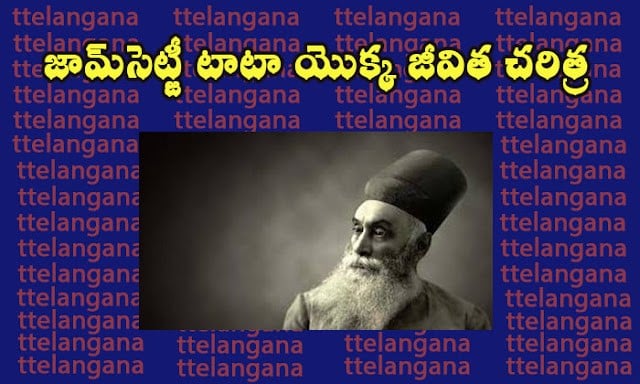Biography of Jamsetji Tata
Jamsetji Tata
Born: March 3, 1839, Navsari, Gujarat
Died: May 19, 1904, Germany
Career: Entrepreneur, Founder of Tata Group
Jamsetji Tata is India’s leading industrialist, and the founder of Tata Group, an industrial conglomerate. The contribution of Jamsetji Tata to the Indian industry is remarkable and extremely significant. Jamsetji helped to establish industrial growth in India at a time when Europeans particularly the British were believed to be the ones to be skilled in the establishment of industries.
Jamsetji who was the eminent creator of the Tata empire is still inspiring people today. He had a remarkable ability to anticipate the future and based on that the vision he had for the industrialization of India. Alongside industries and infrastructure, he also offered excellent facilities for education in science and technology.
The first step is life:
Jamsetji Nusirwanji Tata was born on 3 March 1839 in Navsari, South Gujarat, to the Parsi family. His father’s name was Nusirwanji and his mother’s title is Jeevanbai Tata. Their father of his was the very first in his family to begin his own company. When he was only fourteen, Jamsetji came to Bombay along with his father, and he jumped into the business. He started working for his father at a very young age. At the age of seventeen when he enrolled at Elphinstone College in Mumbai in 1858. Two years after, he was awarded the Green Scholar (Bachelor’s Graduation) in 1858. He then became completely involved in the family business of his father. In 1858, he married Hira Bai Dabu.
In terms of commerce, Jamsetji traveled to England, America, Europe, and other countries as a result of which his knowledge of business and understanding was boosted. In these travels, he realized that Indian businesses could also be successful in the British-dominating textile industry.
Biography of Jamsetji Tata
In the business
At the age of 29, the father worked for his business, and in 1868, he started a trading company with an investment of 21 thousand. He purchased an oil mill in bankruptcy which he converted into a cotton mill, and was able to name it The Alexander Mill. In 1872, Jamsetji sold the mill at a substantial profit, and, with the proceeds, he set up a cotton mill at Nagpur in the year 1874. He changed the name of the mill to Impress Mill when Queen Victoria was awarded the title of Queen of India’.
Jamsetji was one of these visionaries who not only helped pave the way for the development of industrialization in the country but also devoted his time to the welfare of the people who worked within his facilities. He was a step ahead of the times regarding workers and the welfare of workers. He never thought of success as his possession, however for him, his success was also the well-being of the people working for him.
He was close to several revolutionary and nationalist leaders such as Dadabhai Naoroji and Feroz Shah Mehta. Both sides influence each other through their actions and ideas.
He believed that freedom of the economy is at the heart of freedom in politics. Jamshed Ji’s major ambitions in life were to start a steel business as well as establish a known study center, create an elegant hotel, and set up a hydroelectric power project. But just one of his goals was realized in his lifetime and that was his dream of opening the Hotel Taj Mahal. The remaining construction projects were completed by his successors. 4,21,00,000.
The Hotel Taj Mahal was completed in December 1903. In 1903, it was the sole hotel in India equipped with electricity. The motive behind the creation of this hotel was his nationalism. Indians weren’t allowed to access the most luxurious European Hotels in India at the time – they responded to this policy of oppression through the construction of the Taj Mahal Hotel. Taj Mahal Hotel.
Contribution to the development of industrial production of the country
Jamsetji made a significant contribution to the field of industrialization of the nation. He laid the basis for the industrialization of India during a time when the nation was tied by chains of slavery and when the British were considered to be experts in the establishment of industries. He devised a crucial strategy for the creation of steel factories to facilitate the industrialization of India. In addition to this, there was the idea of generating electricity from the swift flow from the Western Ghats (the foundation stone that was laid on the 8th of Feb 1911).
In addition to imagining these magnificent designs, the architect also designed the impressive Taj Mahal Hotel in Bombay which reflected his nationality.
Biography of Jamsetji Tata
In addition to being a successful businessman and industrialist, Jamsetji was a very generous individual, which is why was also able to implement many welfare policies for laborers and employees in his mills and factories. To do this, he provided them with facilities like libraries, parks, and other amenities for free.
Life events
1839: Born on March 3 at Navsari, Gujarat
The year was 1868. Jamsetji established a privately owned firm when he was 29.
The year was 1874. With the aid of his friends, he founded a new company ‘Central India Spinning Weaving, Manufacturing and Weaving Company’, with an investment of 15 lakh rupees.
1877: It was the day that the mill commenced functioning on the 1st of January.
In 1886, Jamsetji established the “Pension Fund.”
1903 1903: 1903: Taj Mahal Hotel is built
1904: Jamsetji Tata breathed his final breath on May 19, in Badnauheim, Germany.
Tags: jamsetji tata,biography of jamsetji tata,jamsetji tata biography,jamsetji tata biography in hindi,jamsetji tata story,ratan tata,biography of ratan tata,jamsetji biography,jamsetji tata biography in english,biography of jamsetji tata in hindi,biography of jamsetji tata in english,ratan tata biography,biography of tata,jamsetji,jamsetji tata biography in bangla,jamsetji biography in hindi,jamsetji nusserwanji tata biography,biography in hindi
